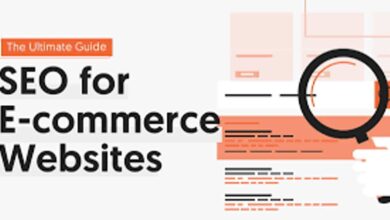
Having a website that attracts a high volume of traffic is one thing, but converting that traffic into paying customers is another challenge altogether. In this article, we’ll discuss strategies for increasing website traffic and improving conversion rates, helping you to get the most out of your online presence.
Optimize your website for search engines (SEO)
Search engine optimization (SEO) is the process of improving the ranking of a website in search engine results pages (SERPs). This is achieved by optimizing the website’s content, structure, and code to make it more attractive to search engines. The higher a website ranks in the SERPs, the more likely it is to receive traffic.
To improve your website’s SEO, consider the following:
Conduct keyword research
Keyword research is a crucial step in SEO strategy. Use an SEO extension to identify relevant keywords with high search volume and low competition. This ensures your content aligns with what users are searching for, enhancing your site’s visibility and driving targeted traffic to your website.
Conducting keyword research is the first step in optimizing your website for search engines. This involves identifying the keywords and phrases that people use when searching for products or services like yours. You can use tools like Google Keyword Planner to find the keywords with the highest search volume and low competition.
Utilizing tools like the Keyword Rank Checker becomes pivotal in gauging the effectiveness of chosen keywords, allowing you to refine your approach and boost your website’s visibility in search engine rankings.
Create high-quality content
Once you have a list of keywords, you can start creating high-quality content that is optimized for those keywords. This can include blog posts, product descriptions, and landing pages. The content should be well-written, informative, and relevant to the keywords you’re targeting.
Improve website structure and navigation
Your website’s structure and navigation play a crucial role in its SEO. A well-structured website makes it easy for search engines to crawl and index your content, while good navigation helps visitors find what they’re looking for. Make sure your website has a clear hierarchy, with the most important pages easily accessible from the homepage.
Use meta tags and alt tags
Meta tags and alt tags provide information about your website and its content to search engines. They help search engines understand the context of your page, improving its ranking in the SERPs. Make sure to include relevant keywords in your meta tags and alt tags, but avoid keyword stuffing.
Pay-per-click advertising (PPC)
Pay-per-click (PPC) advertising is a form of online advertising in which advertisers pay each time a user clicks on one of their ads. PPC is a quick and effective way to drive traffic to your website, and it’s particularly useful for reaching target audiences.
To get the most out of your PPC campaigns, consider the following:
Choose the right platform
There are many platforms to choose from when it comes to PPC advertising, including Google Ads, Bing Ads, and Facebook Ads. Choose the platform that best suits your target audience and budget.
Set clear goals
Before launching a PPC campaign, it’s important to set clear goals. What do you want to achieve with your campaign? Are you looking to drive traffic to your website, generate leads, or make sales? Setting clear goals will help you measure the success of your campaign and make any necessary adjustments.
Choose the right keywords
The keywords you choose for your PPC campaign will play a crucial role in its success. Choose keywords that are relevant to your product or service, and that have a high search volume and low competition.
Use compelling ad copy
Your ad copy should be compelling and grab the attention of your target audience. Make sure your ad copy is clear, concise, and includes a call-to-action (CTA).
Monitor and adjust your campaign
PPC campaigns are never a one-time setup. To get the most out of your campaign, it’s important to monitor its performance and make adjustments as needed.
This includes monitoring your conversion rates, average cost-per-click, and click-through rates. Use this data to optimize your ad copy, target audience, and keywords to improve the performance of your campaign.
Content Marketing
Content marketing involves the creation and dissemination of valuable, pertinent, and consistent content to attract and retain a well-defined target audience. This strategic approach aids in drawing traffic to your website, generating leads, and establishing brand awareness.
Create valuable content
The key to successful content marketing is creating valuable content that your target audience will find interesting and useful. This can include blog posts, infographics, videos, and e-books. Make sure the content is relevant to your target audience and provides them with information they can use.
Distribute your content
Once you’ve created your content, it’s time to distribute it. Share your content on your website, social media channels, and other relevant websites and forums. This will help you reach a wider audience and attract more traffic to your website.
Use email marketing
Email marketing is a highly effective way to reach your target audience and promote your content. Use email marketing to send your subscribers updates about your latest blog posts, new products, or special offers. Make sure your emails are well-designed, personalized, and include a clear CTA.
Improve your website’s user experience (UX)
The user experience (UX) of your website plays a crucial role in its success. A website with a good UX will keep visitors engaged and encourage them to take action, while a website with a poor UX will drive visitors away.
Make your website easy to navigate
Your website’s navigation should be clear and intuitive, making it easy for visitors to find what they’re looking for. Make sure your website has a clear hierarchy, with the most important pages easily accessible from the homepage.
Make your website mobile-friendly
More and more people are using their mobile devices to access the internet, so your website must be mobile-friendly. Make sure your website is responsive, meaning that it adjusts its layout to fit the screen of any device.
Use high-quality images and videos
High-quality images and videos can help improve the UX of your website, making it more visually appealing and engaging. Make sure the images and videos you use are relevant to your products or services and add value for your visitors.
Make your website fast
A slow-loading website will frustrate visitors and drive them away. Make sure your website loads quickly by optimizing images, using a fast hosting service, and minifying your code.
Conclusion
In conclusion, there are many strategies you can use to increase website traffic and improve conversion rates. From optimizing your website for search engines to using pay-per-click advertising and content marketing, these strategies will help you reach a wider audience and convert more visitors into paying customers. Remember to continually monitor and adjust your strategies to ensure their continued success.
If you’re struggling to implement these strategies effectively, consider working with a CRO agency. These experts can help you create and execute a comprehensive plan that drives traffic, improves user experience, and ultimately leads to higher conversion rates.







